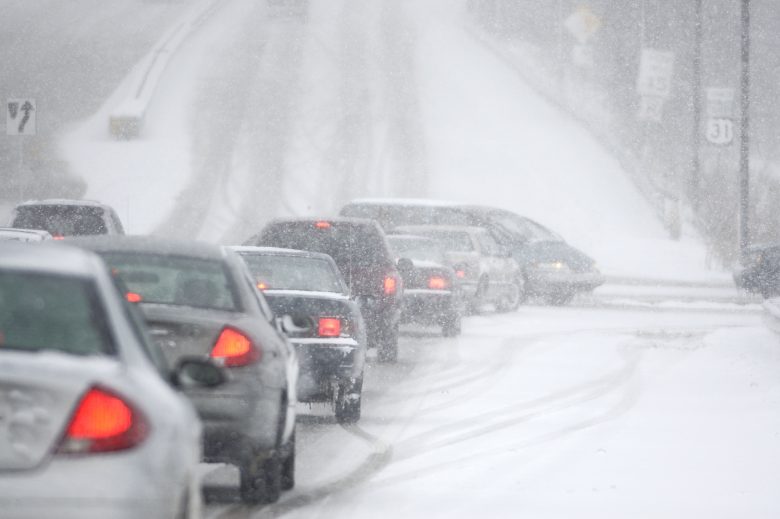Driving requires concentration, awareness, and an environment that is free from distraction. This is especially true as the winter weather sets in. The cold affects both vehicles and drivers; extra stopping distance is required and turns can be compromised by ice and snow. When the streets and highways are icy drivers must be prepared to overcome skidding and slick road conditions, all while keeping watch for other drivers on the road.
To make matters worse, there’s less daylight, which means more time spent driving in the dark. Drivers have less time to react to hazards due to lost sightlines, and morning and evening commutes now happen when the sun is down. All of this adds up to a greater likelihood of incidents.
If you want to protect employees this winter, you need to prepare them for the changes in driving conditions. In particular, there are a number of factors that often go overlooked where a driver’s safety is concerned, and managing them can be the key to mitigating danger.
Physical environment
The most obvious winter driving challenge is the changing environment. Make sure your drivers know the importance of being aware of their surroundings and the need to adjust driving based on weather conditions.
Also highlight that while traction issues are a big concern while driving, slips and falls can also account for many driver injuries. Instill in your workers the need to have three points of contact when entering or exiting a vehicle, and to always test their footing before they commit their weight. (The best way to ingrain long-term safety habits is with a workplace training program that has a dedicated habit-building component.)
Multitasking
Multitasking while driving is dangerous at the best of times, and it’s especially risky during winter. Encourage driver safety by ensuring your employees know the dangers of multitasking on the road. The more someone multitasks, the greater the risk of a collision.
This guide on distracted driving suggests rehearsing what-if scenarios to prepare workers for winter driving conditions. This is especially important if your company has professional drivers who will be behind the wheel for long periods of time. Even if every driver in your fleet is trained in road safety, anticipating problems that may arise can attune them to the possibility of something going wrong.
Fatigue and other human factors
According to the National Sleep Foundation, fatigue is a contributing factor in a stunning number of road incidents. And fatigue is much more likely to be an issue in the winter. When drivers are feeling fatigued, they will be unable to concentrate for long periods of time, might lose track of their surroundings or worse—fall asleep at the wheel. Encourage break taking and provide a schedule that accounts for the weather conditions.
Other human factors, like rushing, frustration and complacency, are also likely to be present during the winter months. These can lead to drivers making an error, and icy roads or lowered visibility are particularly unforgiving of even small driver slip-ups. It’s important to provide workers with the tools to deal with human factors strategically. Formal training can help workers recognize and combat human factors not only on the road but in the workplace as well.
Mechanical preparations
Finally, teach employees the importance of inspecting their vehicles throughout the winter season. Companies with large fleets typically have maintenance standards, but routine inspections of vehicles are rarely suggested to workers who don’t drive as part of their job. Encourage walkarounds of personal vehicles and provide employees with detailed guidelines on what to look for. Safety managers can also provide employees with a list of emergency supplies that can be kept in their cars, including a first aid kit, fire extinguishers, jumper cables, roadside flares, and warm blankets.
Getting in the habit of checking simple vehicle components before each road trip does more than monitor the vehicle’s condition and it’s surroundings—it gets the driver thinking about safety before heading out. This gives them the opportunity to also think about conditions and human factors, and change how they drive accordingly.
Putting it all together
The important thing to note here is that all of the things mentioned above work together—the vehicle, road conditions and human factors all playing a part and each affecting the other.
In most cases, you can navigate slippery conditions if you have winter tires, are really focussed on driving and adjust your speed, stopping distance, etc. It’s when one or more factors are out of sync with the others when accidents happen. You see it a lot at the onset of winter—where people haven’t put their snow tires on yet and haven’t adjusted their driving habits to suit the conditions. There’s almost always a news story in early winter that talks about pile ups on freeways and the number of collisions as a result of the first winter weather.
Helping people understand this correlation is the key to getting them to put in the effort of building good vehicular habits by giving them a more complete answer to “why accidents happen”. And reminding them that they are sharing the roads with lots of other people who may not have the same level of awareness will provide extra motivation to keep focussed on driving.

